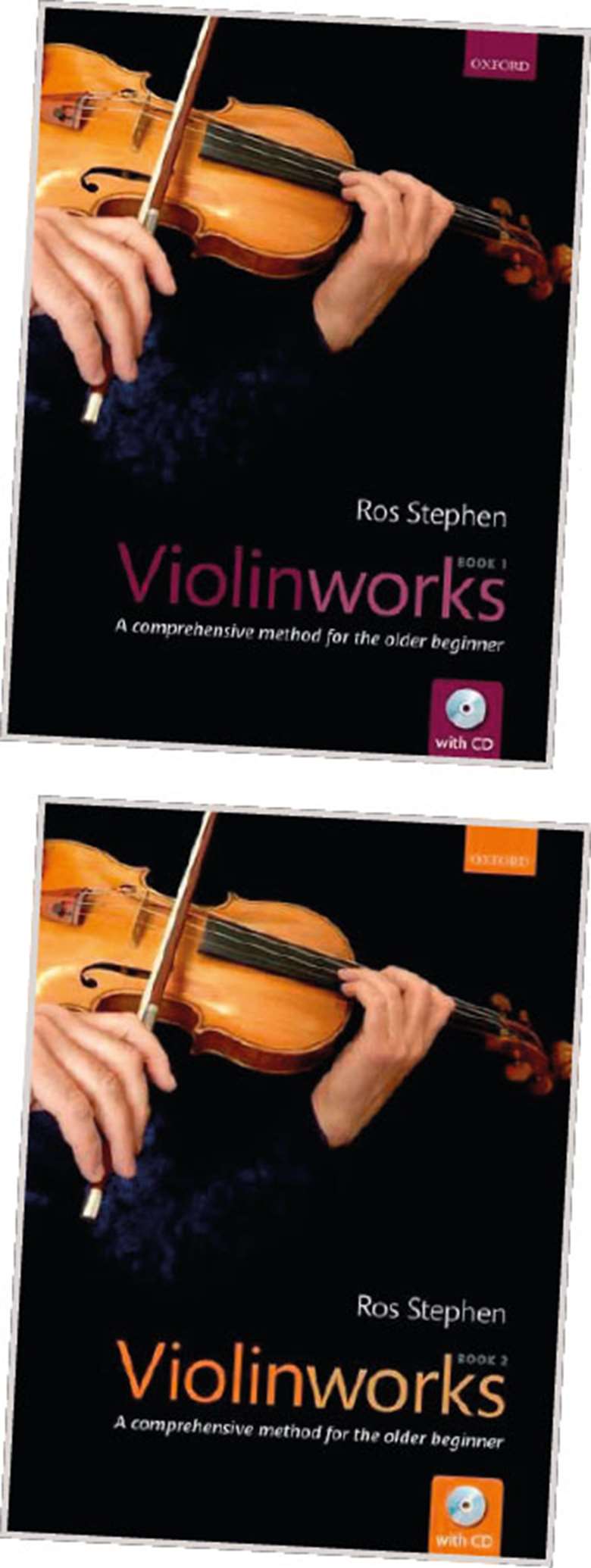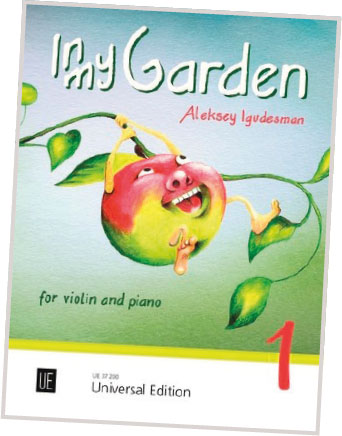Violin Sheet Music Reviews: March 2018
Helena Ruinard
Thursday, March 1, 2018
Helena Ruinard reviews Violinworks, Books 1 &2 by Ros Stephen, published by Oxford University Press and In My Garden by Aleksey Igudesman, published by Universal Edition.

VIOLINWORKS, BOOKS 1 & 2
In the already well-served market for violin methods, these books are set to become an enduring ‘go-to’ resource for adult beginners and their teachers. In two volumes they take the learner from complete novice to around Grade 3 through extremely detailed instruction of technique and violin-centred musical knowledge, both via the book and through supporting videos and backing tracks on the free-to-access website. The accompanying CDs contain demonstration tracks with full piano, string quartet or band accompaniment and it is also possible to download PDFs of piano accompaniments from them.
There is a delightful mix of her original pieces together with traditional music and a refreshing selection of classical pieces and excerpts to illustrate each new step in the learning process. Cross references abound, and a favourite trick is to direct the student to go back to a piece they learnt earlier in order to play it starting on a different note. This develops the ear and it is also used to encourage awareness of note names, including naturals, sharps and flats, by saying the new names as the note is played.
From the beginning there is a strong emphasis on training the ear, from activities to help with feeling the pulse and divisions of the beat to reminders and activities to hear the music in one's head before playing it, either by singing it or memorising it. As with most methods, this one starts off by embedding pulse and a basic knowledge of the instrument, followed by the bow hold and bowing open strings. Nothing is rushed but rather is explained fully at every new juncture, with entire chapters dedicated to the bow hold and an introduction to the left hand. These first few chapters are a masterclass for teachers as much as an instruction for beginners: great if a student is focused enough to read them on their own, but probably best used judiciously with plenty of time spent on the playing exercises. There are standout tips on how to feel the weight of the bow in relation to each finger on the stick and keep the fingers relaxed, and how to maintain left hand shape and finger independence through moving the fingers from the base joints.
It is always interesting to see how the left hand is introduced, and in line with the emphasis on developing the ear, the first practical exercise is playing octaves between open string and third finger. Melodies using the first finger then appear alongside pieces and exercises featuring left-hand pizzicato and harmonics to further develop the hand shape.
There is plenty of information to satisfy the need for intellectual understanding to do with rhythms, note names, keys and scales; thorough guidance on posture, bow technique and left hand technique with many useful tips on the website video tutorials; and plenty of music to play and learn from. There is a lightness and clarity to Stephen's instruction and whether or not it is supplemented with other resources or the incentive of a graded exam or two, this set of books is a gift for learners and teachers alike.
IN MY GARDEN

Has the fruitful and sometimes indulgent relationship between Universal Edition and Aleksey Igudesman finally been stretched a little too far in the name of exoticism and pushing the boundaries? This is a beautiful book to read and look at and evidently a lot of love and care has gone into its production, with a humorous and stylish cartoon adorning each piece and an accompanying poem loosely translated to work in three languages.
The issue is, who is this book for? The cover, with its beautifully drawn illustration of a cartoon apple – that is, an apple with eyes, mouth and a cheeky expression as it looks to swing itself free of its branch – and a big, red number one, would suggest that it is for children. Once inside the pieces, however, you enter a rather cold harmonic world and although the violin part is all in first position, it requires a working knowledge of all the flats and sharps. The piece about the apple is reminiscient of Copland's ‘Quiet City’ while The Stawberry is clearly sophisticated but with a particular kind of jazz harmony that suggests she is also too cool for school.
It may be that Igudesman is a salad man as The Tomato is the most playful piece, in a carefree 6/8, and The Cucumber and The Lettuce are both simple, happy pieces based on the development of one idea. As for the other fruit and vegetables in the collection, I would not attempt to feed them to the children I teach but perhaps adults would be prepared to put in the effort required to play the crunchy harmonies of The Carrot or the Bartókian modulations of The Onion. Be advised that they would need a similarly dedicated pianist in order to manage the toothsome accompaniments.

